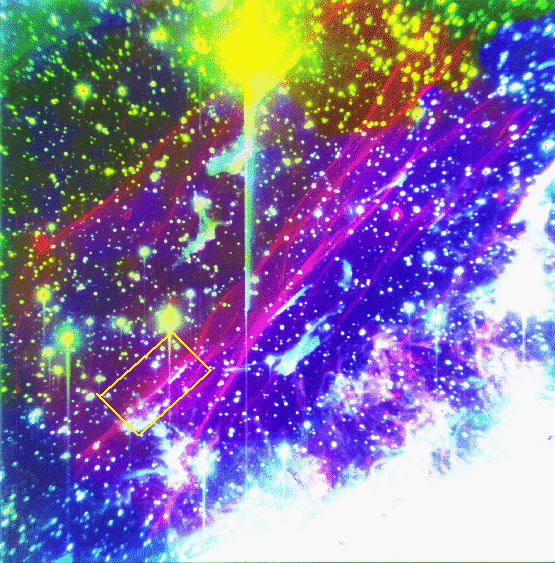

This image of the northeastern region of the Cygnus Loop supernova remnant shows a combination of optical and X-ray data. Red indicates filaments emitting in the light of hydrogen, green shows regions emitting in the light of twice-ionized oxygen, and the diffuse blue glow shows X-ray emission. Various combinations of these produce other colors. For instance, green filaments with surrounding X-ray (blue) emissions produce a turquoise result. Background stars, which do not emit in X-rays, look yellow (green + red). The white region at lower right is very bright in all three colors. (These bright filaments are just the very top edges of the familiar "Veil Nebula" filaments, NGC 6992.) The yellow box on the figure shows the approximate region enlarged in the accompanying Hubble Space Telescope WFPC2 hydrogen Balmer-alpha line image.
Scientists observed these different kinds of supernova remnant emissions to better understand how supernova shock waves interact with the gas and dust in the interstellar medium. (PHOTO from J. Hester, J. Raymond, and W. Blair, 1994, Astrophysical Journal, Vol. 420, pg. 721, and is copyrighted by The Astrophysical Journal.)
Return to Bill Blair's HST Cygnus Loop page.
Bill Blair ([email protected])